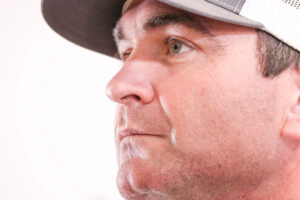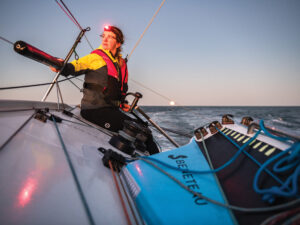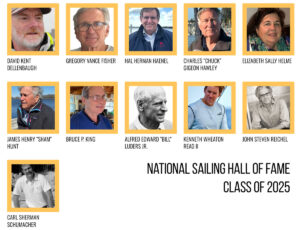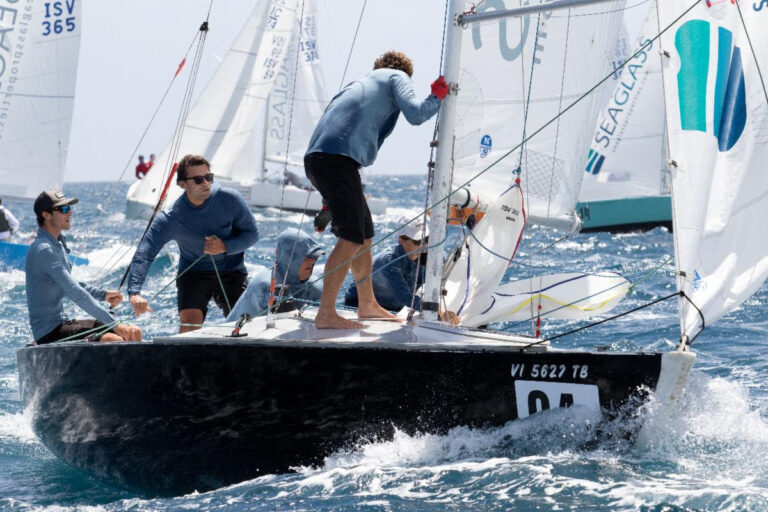Behind every successful endeavor there’s usually a quiet hero who starts with a vision and then has the persistence to make the project work. Turning big ideas into reality is rarely easy, but luckily there are many people in sailing across the United States who fit this description. In my travels I’ve met dozens of people like this, and they always teach me a few things, so this month I thought I’d introduce you to two of them.¶ Tom Shadden, 70, started working 30 years ago on behalf of the junior program at the Long Beach YC in California. He had three children enrolled and wanted a positive environment for them. Shadden, a stock broker, is an organizing type of person, and it wasn’t long before he became vice chair of the junior committee. He soon learned one of the golden rules of being a volunteer. “You need a vice chairman to work with,” he says, “who will take over after two or three years. In a volunteer organization, people burn out, so rotating members keeps fresh ideas coming.” Shadden says he likes to “look for new ways of making things work better,” and says for the junior program that hiring a director named Jim Grubbs was “the critical moment. He was a strong taskmaster and focused on drills and more drills.” Shadden’s son John responded so well he went on to become an All American at USC and win a bronze medal in the Men’s 470 at the 1988 Olympics. While Shadden would be the last to take credit for his son’s successes, the old man’s efforts sure helped. A key move was to make it easier for youth sailors to move up the ladder by starting the Southern California Youth YRA. “The goal was to develop competitive sailors,” says Shadden, “and that included setting up a criteria for hiring instructors.” The next step was to build a network of communication so the top kids could sail against each other in different geographic areas of Southern California (www.scyyra.org). “We learned from people from around the country,” he says. “We didn’t have high school sailing out here so a group of parents got together to learn from the East Coast organizers. Timmy Larr, from New York, was probably the key person who helped us figure out how to put this together.” High school sailing is now as strong or stronger in Southern California than anywhere else. Shadden was also instrumental in hosting the 1984 Olympic Games, working with Chuck Kober and others to start the Olympic Classes Regatta Organizing Committee to raise money to put on pre-Olympic regattas. “Once we proved to the Los Angeles Olympic Committee what we could accomplish,” says Shadden, “we became the host. We got Southern California Yachting Association involved to get the volunteers from different clubs up and down the coast.” Eventually they recruited over 2,000 volunteers. The Olympic Regatta in Long Beach was a huge success, but Shadden and many others didn’t stop there. “We had some money left over after the Games and decided to use it to build a sailing center, starting the Pacific Coast Sailing Foundation to raise more funds.” Shadden is quick to mention many people who helped including Bill Ficker, Dave Crocket, Tim Hogan, Chuck Kober, and Roy Disney. Today the California International Sailing Center hosts high school and college regattas and training at every level. In addition to all of these projects, Shadden has been involved at every level of America’s premier match race-the Congressional Cup. “It’s the huge event of the year. It is something every member (at LBYC) likes to be part of and to make an environment for the skippers that is very positive and well run.” Shadden can take a lot of pride in his accomplishments, but will typically give credit to others. His advice to volun- teers is to adopt the business model of having “a vision and a mis- sion statement” and to adopt good discipline organizationally, as they’ve done with the Congressional Cup, appointing a chairman of the event five years in advance so he or she has time to learn the ropes on different committees. Sharing Shadden’s passion for improving junior sailing is Roy Wilkins, 58, although his focus has been through the eyes of a coach or teacher. He’s been a member of Island Heights (N.J.) YC since 1955 and began his career as a teacher and soccer coach at the Toms River South High School in New Jersey. Wilkins also taught sailing in the summers and continues the practice as sailing coach for both Ocean County College and Monmouth University. Like Southern California, the New Jersey shore has become a big producer of star youth sailors, and Wilkins has been an engine behind that development. Like Shadden, he’ll pass the credit to others, but in the 1980s, he was instrumental in introducing the Optimist dinghy to the area and promoting advanced racing for promising sailors. His son, RJ, went on to sail for the College of Charleston when they won the national championship. Beyond his role as a coach, Wilkins has raced his catboat-an A Cat called Spy (see SW’s Feb. ’05 issue)-for the last 25 years. Wilkins is always looking at the next issue to tackle, and rarely at the achievement of yesterday. For example, he says, “When I look out on Barnegat Bay, I don’t see many juniors sailing because everyone is traveling. We have great talent, but we aren’t growing.” He also points out,”Only a small percentage of sailors continue in their late teens.” What’s the solution for junior sailing organizers? “We force too much racing on young sailors and have to work to make sailing more fun,” he says. “Even though I was part of it, there’s now too much emphasis on singlehanded sailing. We need a two-person boat at an early age; team work is important. “One suggestion,” says Wilkins, warming to his vision,”is that on a given day, junior sailors who own a boat should take someone on the water who is close to them in age. They should know the person-they could be a classmate, a neighbor, a teammate in another sport, a relative, etc. And it’s important that the new sailor not be a member of any YC. The day should be dedicated to introducing the new sailor to steering, with the goal of being able to helm a boat after several hours.” Talk with Wilkins for a while, and you’ll be impressed by his conviction and his ideas, which are based on his many years of working with young people. You’ll also get a sense of why kids respond to him so well. “There should be no racing during this introductory lesson,” he adds. “Peer pressure is important; junior sailing rosters will increase if young sailors are teaching each other.” Tom Shadden and Roy Wilkins live on opposite coasts and each apply their own strengths and style to junior and other sailing in unique ways. But they share an intense commitment to building the sport, and their efforts have helped raise the level of competition in the United States. And like so many others, they’re always working on the next thing.









